Lemko People – European Minority That Lost Their Homeland And Still Live In Exile
Jan Bartek – AncientPages.com - Life for the Lemko people has always been challenging. Being a small but distinctive minority, they have been under pressure from many European rules.
The Lemko people are one of Europe’s most distinct minorities, and despite many historical problems, they have managed to preserve their culture, traditions, and language.
The Lemkos lost their homeland and still live in exile.
Who Are The Lemko People?
Almost 11,000 Lemkos are currently living in Poland. These people are scattered across the country as a result of postwar resettlement. The Lemkos are East Slavs, and they were once natives of the Beskidy Mountains, a series of mountain ranges in the Carpathians, stretching from the Czech Republic in the west along the border of Poland with Slovakia up to Ukraine in the east.
Monument commemorating the deportation of Lemkos. Peremozhne, Luhansk region (Ukraine). Credit: Qypchak - CC BY-SA 3.0
The historical definition of East Slavs is a rather complex issue. “The Lemko dialect is classified as Ukrainian, although it was formed on the northern side of the Carpathians and is shot through with Polish influences. As a result, it will not speak of “an East Slavic population that has at various times been called Lemkos, Boikos, Hutsuls, Lemaki, Rusnaks, Rusins, Carpatho-Rusins, Carpatho-Ukrainians, and Carpatho-Rusians.
Some of these terms denote historically distinct groups which regarded (and regard) themselves as such. Lemkos, Boikos, and Hutsuls are, whatever else they may be, Lemkos, Boikos, and Hutsuls. None of these terms are synonyms for the “East Slavic population in question.” 1
Most of the Lemko people are today Roman Catholics, but some have remained faithful to the Ukrainian Greek Catholic Church or Eastern Orthodox Church. Thousands of Lemkos visit Jawor Mountain every year. At this sacred site, they participate in the celebrations of the feast of Peter and Paul.
What Happened To Lemkos’ Komancza Republic?
The Lemko people had the misfortune of constantly dealing with forces greater than themselves. Their beginnings can be traced to the 16th-century settlement of Rusyns and Vlachs in the Lower Beskids, where they mixed with Polish inhabitants. At one time, the Lemkos did have a state of their own.
Lemkos in original goral folk-costumes from Mokre, Poland. Credit: Silar - CC BY-SA 3.0
After World War I, the Lower Beskids and its Lemko population became Polish. The Lemkos used this opportunity to found the Komancza Republic, “an independent Lemko state of pro-Ukrainian orientation, aiming at establishing a union with West Ukraine.
The newborn republic existed for less than two months, suppressed by the Polish army during the Polish-Ukrainian War of 1918-1919. Even though Poland was one of the biggest beneficiaries of the right to self-determination, the Polish authorities were unwilling to accept the self-determination of Polish minorities.” 2
“ The agenda set by the Polish authorities of the 1930-ties left no room for the Lemko community to realize its full potential.” The Polish authorities were unwilling to support “a micro-minority population desperately in a need of such support.” 3
Today, more than 50 % of the Lemko people reside in Lower Silesia and Lesser Poland. A small number of the Lemkos live in Lemkivshchyna. The Lemkos are one of four native ethnic minorities currently inhabiting Poland; the others are the Tatars, the Crimean Karaites, and the Roma.
Being people who can adapt, the Lemkos have managed to resettle, never giving up their cultural heritage, although many still regard the Lower Beskids as their homeland.
Written by Jan Bartek - AncientPages.com Staff Writer
Updated on February 9, 2024
Copyright © AncientPages.com All rights reserved. This material may not be published, broadcast, rewritten or redistributed in whole or part without the express written permission of AncientPages.com
Expand for references- Snyder, Timothy. Harvard Ukrainian Studies23, no. 1/2 (1999): 145-48. Accessed January 12, 2020.
- Wojciech Oleksiak - The Lost Homeland & Lasting Identity of the Lemko People, Culture.pl
- Horbal, Bogdan. Journal of Slavic Linguistics11, no. 2 (2003): 361-63. Accessed January 12, 2020.
Source top image:
Szydlo St. - Open air museum of Lemko culture in Zyndranowa, Poland, CC BY-SA 3.0
More From Ancient Pages
-
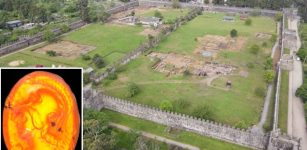 Roman Fort Of Apsaros Reveal Some Of Its Archaeological Secrets
Archaeology | Nov 7, 2023
Roman Fort Of Apsaros Reveal Some Of Its Archaeological Secrets
Archaeology | Nov 7, 2023 -
 Odd Ancient Dwellings Of The Snake People – Clues From Biblical Lands – Part 2
Biblical Mysteries | Sep 10, 2020
Odd Ancient Dwellings Of The Snake People – Clues From Biblical Lands – Part 2
Biblical Mysteries | Sep 10, 2020 -
 Letters Reveal How Ancient Egyptians Argued With Friends And What Angered Them
Civilizations | Oct 18, 2020
Letters Reveal How Ancient Egyptians Argued With Friends And What Angered Them
Civilizations | Oct 18, 2020 -
 What Is The History Of Pancakes?
Ancient History Facts | Mar 7, 2024
What Is The History Of Pancakes?
Ancient History Facts | Mar 7, 2024 -
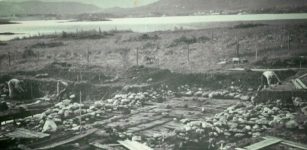 Lost Viking Village Borgund And Its 45,000 Artifacts Hidden In A Basement Examined By Experts
Archaeology | Apr 22, 2022
Lost Viking Village Borgund And Its 45,000 Artifacts Hidden In A Basement Examined By Experts
Archaeology | Apr 22, 2022 -
 Odd Ancient Dwellings Of The Snake People – American-European Connection Part 1
Featured Stories | Sep 6, 2020
Odd Ancient Dwellings Of The Snake People – American-European Connection Part 1
Featured Stories | Sep 6, 2020 -
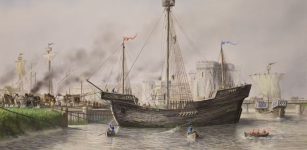 Newport Ship: Experts Reassemble Medieval Vessel Found In The Mud
Featured Stories | Feb 7, 2023
Newport Ship: Experts Reassemble Medieval Vessel Found In The Mud
Featured Stories | Feb 7, 2023 -
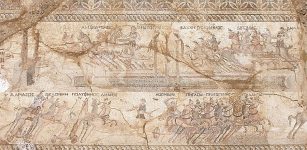 4th Century Mosaic With Hippodrome Scene Excavated At Akaki, Cyprus
Civilizations | Sep 10, 2015
4th Century Mosaic With Hippodrome Scene Excavated At Akaki, Cyprus
Civilizations | Sep 10, 2015 -
 Mystery Of Lady Of Elche – Puzzling Artifact Of An Unknown Queen Or Priestess
Artifacts | May 22, 2014
Mystery Of Lady Of Elche – Puzzling Artifact Of An Unknown Queen Or Priestess
Artifacts | May 22, 2014 -
 Should Scientists Open An 830-Million-Year-Old Rock Salt Crystal With Ancient Microorganisms That May Still Be Alive?
Archaeology | May 27, 2022
Should Scientists Open An 830-Million-Year-Old Rock Salt Crystal With Ancient Microorganisms That May Still Be Alive?
Archaeology | May 27, 2022 -
 Riddle Of The Shining Sphere And Its Unknown Properties – Why Did It ‘Vanish’?
Featured Stories | Feb 22, 2020
Riddle Of The Shining Sphere And Its Unknown Properties – Why Did It ‘Vanish’?
Featured Stories | Feb 22, 2020 -
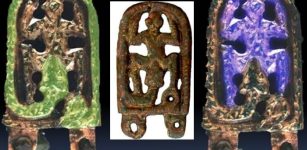 Unique Medieval Bronze Buckle Of A Snake Devouring A Frog-Like Creature Found In Brno, Czech Republic
Archaeology | Dec 13, 2023
Unique Medieval Bronze Buckle Of A Snake Devouring A Frog-Like Creature Found In Brno, Czech Republic
Archaeology | Dec 13, 2023 -
 We Need To Look Underwater To Understand Our Past – New Study
Archaeology | Apr 14, 2023
We Need To Look Underwater To Understand Our Past – New Study
Archaeology | Apr 14, 2023 -
 First Settlers Of Ancient Peru Left Behind 12,000-Year-Old Stone Objects
Archaeology | Mar 16, 2018
First Settlers Of Ancient Peru Left Behind 12,000-Year-Old Stone Objects
Archaeology | Mar 16, 2018 -
 Eduba: Scribal School In Ancient Mesopotamia
Ancient History Facts | Jun 29, 2016
Eduba: Scribal School In Ancient Mesopotamia
Ancient History Facts | Jun 29, 2016 -
 Olive Trees Were First Domesticated 7,000 Years Ago In The Jordan Valley
Archaeology | Jun 17, 2022
Olive Trees Were First Domesticated 7,000 Years Ago In The Jordan Valley
Archaeology | Jun 17, 2022 -
 Vikings Brewed Beer With Heated Stones – Old Tradition Popular In Germany, Finland And Baltic States
Archaeology | Dec 14, 2017
Vikings Brewed Beer With Heated Stones – Old Tradition Popular In Germany, Finland And Baltic States
Archaeology | Dec 14, 2017 -
 Barabar Caves: The Oldest Surviving Rock-Cut Caves With Acoustic Effects In India
Featured Stories | Jul 1, 2021
Barabar Caves: The Oldest Surviving Rock-Cut Caves With Acoustic Effects In India
Featured Stories | Jul 1, 2021 -
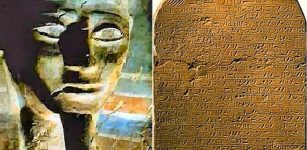 Hyksos: Foreign Rulers Of Avaris Who Founded The Fifteenth Dynasty Of Egypt
Civilizations | May 11, 2017
Hyksos: Foreign Rulers Of Avaris Who Founded The Fifteenth Dynasty Of Egypt
Civilizations | May 11, 2017 -
 New Study Challenges The Beginning Of Civilization
Archaeology | Apr 11, 2022
New Study Challenges The Beginning Of Civilization
Archaeology | Apr 11, 2022



